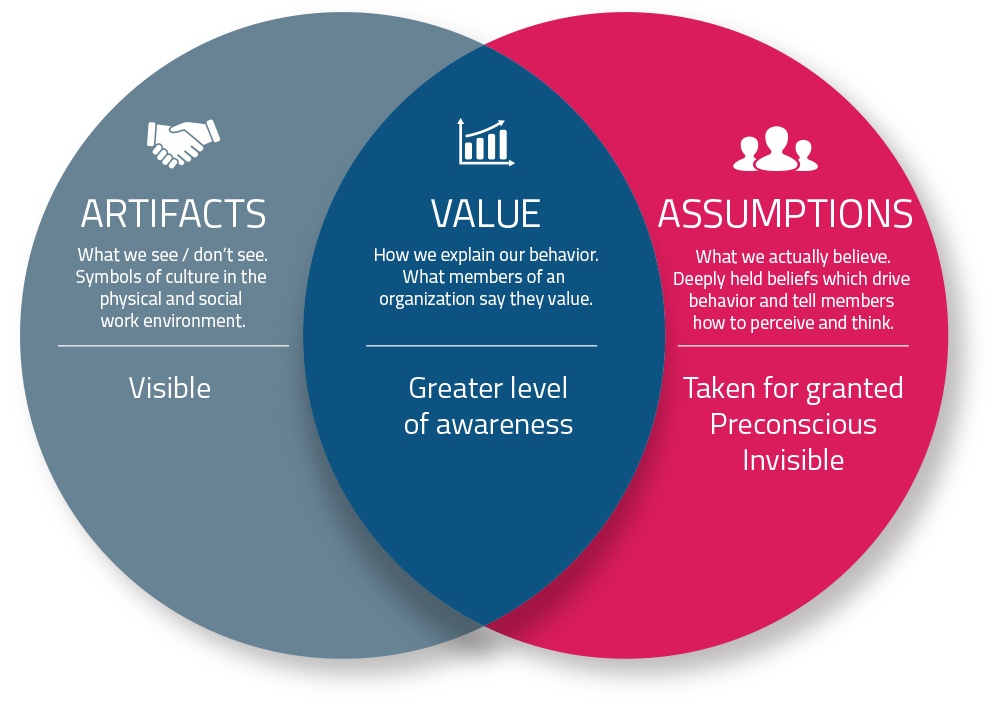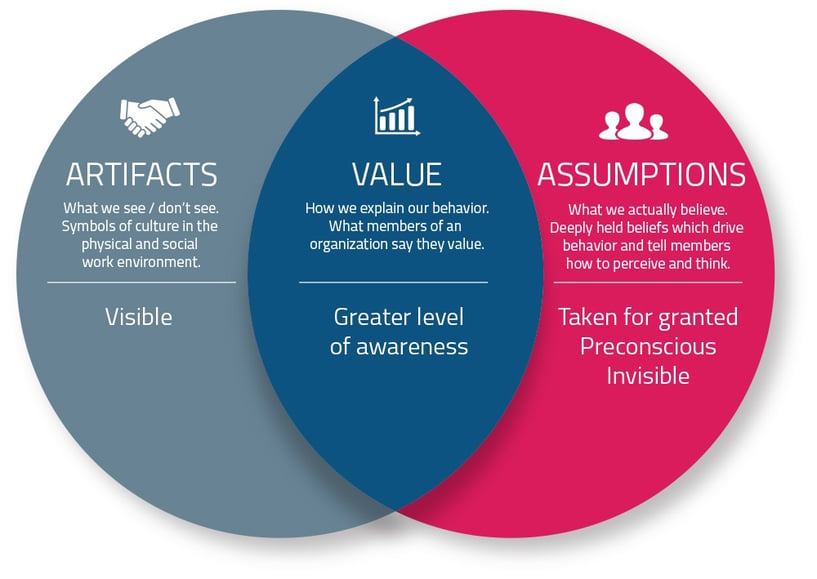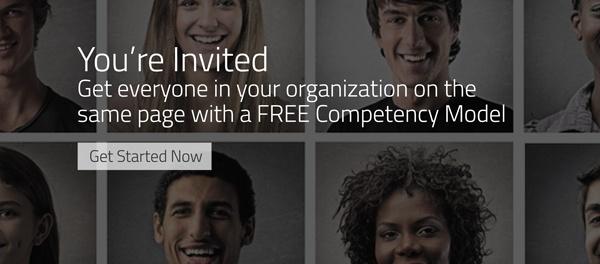Culture Change Conversation - Part 2
Author
Heath O'Leary
In our previous post Starting a Culture Change Conversation we reviewed how to identify key business issues in specific, behavioral terms and we started to uncover drivers of the behaviors that contribute to problems.
In this article, we'll focus on redefining new behaviors and aligning them with the new culture/vision and the right rewards and recognition.

As a reminder, here is the model we use for talking about Culture. It comes from work by Edgar Schein who was the first scholar to use Culture as an important concept in business. As long as all levels align and are congruent, then there is no conflict or problems. However, when there is a disconnect between what is being said [VALUE] and what is actually happening [ARTIFACTS], then we have to dig for the underlying [ASSUMPTIONS] that are really driving things.
Why do we do what we do?
Let's start by having your group discuss Values or intermediate Assumptions. Complete the list below with YOUR ORGANIZATION’S VALUES or statements about Who We Are, if you have some published, otherwise have the group fill in the 'We Value' and 'We Value Our' statements. This should include what we say we Want to be.
- We value
- We will be the
- We are the leader in
- What else do we value?
Identifying Values
Why are we doing these things?
- We believe
- We think
- We value
What are the inconsistencies or disconnects?
Next, we'll have the group look for inconsistencies between observed behaviors and values. Where these inconsistencies exist, a deeply held assumption must be identified and articulated. This is the critical step in understanding and then changing culture.
1. Where are inconsistencies between what we say we value and what we actually observe?
Have the group start picking out inconsistencies between what we say and what is up on the wall. You will probably have to do some prompting. As the group identifies an inconsistency, push to understand what the real, underlying or unwritten assumption must be. Develop and discuss each suggestion until you have consensus in the group, then write it up on the flipchart or whiteboard as an current assumption.
2. What are the underlying, unwritten Assumptions or rules that drive the inconsistencies between what we say and what we see?
For every disconnect or inconsistency, have the group discuss to consensus, what the underlying assumption or belief must be that is driving the inconsistent behaviors.
What are the consistencies? [What to keep]
After developing the underlying assumptions that result in inconsistencies between what is said and what is actually being observed, spend some time looking at the areas where there are CONSISTENCIES between what is said/wanted, and what is observed.
1. Where are the consistencies – where 'what we do' is consistent with 'what we say we want' or do?
These are the potential strengths you can leverage and build on to create a new culture. List the Values and Assumptions that are consistent with the Artifacts of how we work.
This exercise also helps with the feelings that “nothing is right here” that can come from all the work identifying issues and inconsistencies. Keep in mind, most organizations only need to refine their existing culture.
Get the entire set of Culture Change Exercises in our new Culture Change Toolkit.
 Align your Culture and Strategy with a Free Competency Model.
Align your Culture and Strategy with a Free Competency Model.
We're now offering a FREE Competency Modeler toolkit, so you can get started selecting the competencies that are essential to your Culture.
Your model can then become the ‘blueprints’ for hiring, managing, and developing your people.
Click here to get full access to the ThinkWise Competency Modeler toolkit
